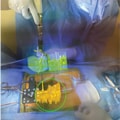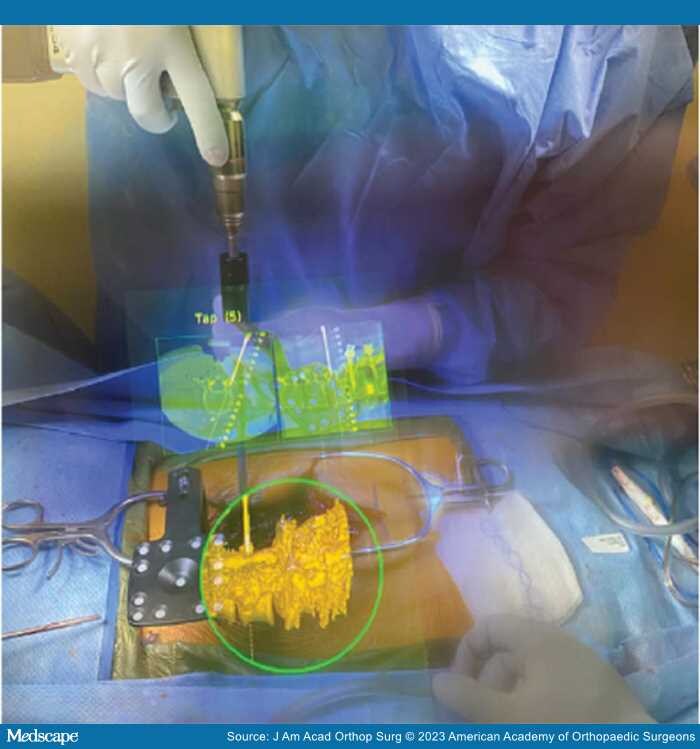Abstract and Introduction
Abstract
The application of augmented reality (AR) in surgical settings has primarily been as a navigation tool in the operating room because of its ease of use and minimal effect on surgical procedures. The surgeon can directly face the surgical field while viewing 3D anatomy virtually, thus reducing the need to look at an external display, such as a navigation system. Applications of AR are being explored in spine surgery. The basic principles of AR include data preparation, registration, tracking, and visualization. Current literature provides sufficient preclinical and clinical data evidence for the use of AR technology in spine surgery. AR systems are efficient assistive devices, providing greater accuracy for insertion points, more comfort for surgeons, and reduced operating time. AR technology also has beneficial applications in surgical training, education, and telementorship for spine surgery. However, costs associated with specially designed imaging equipment and physicians' comfort in using this technology continue to remain barriers to its adoption. As this technology evolves to a more widespread use, future applications will be directed by the cost-effectiveness of AR-assisted surgeries.
Introduction
One of the main applications of virtual reality (VR) and augmented reality (AR) systems in the operating room (OR) is as a navigation tool. In standard surgical navigation, the surgeon must divert their attention away from the surgical site to consult a separate navigation screen, where they can verify anatomical landmarks and positions displayed on a 3D model. AR-based navigation would enable the surgeon to view this information without obstructing their field of view or causing distractions. In AR-based navigation, virtual information is overlayed onto the real-world environment, allowing the surgeon to view both simultaneously (Figure 1). AR can improve surgical efficiency and encourage the wider adoption of navigation technologies in spine surgery. AR is easier to use in the OR and does not markedly change the surgical procedure. However, the costs associated with specially designed imaging equipment and physicians' comfort in using this technology continue to remain barriers to its adoption.[1]
Figure 1.
Image showing the surgeon's operating view using augmented reality to superimpose medical scans and data in the field of vision above the patient's open surgical site.41
In this article, we review the current literature regarding the use of AR in spine surgery and various other areas where it is applicable.
J Am Acad Orthop Surg. 2023;31(17):e601-e609. © 2023 American Academy of Orthopaedic Surgeons











